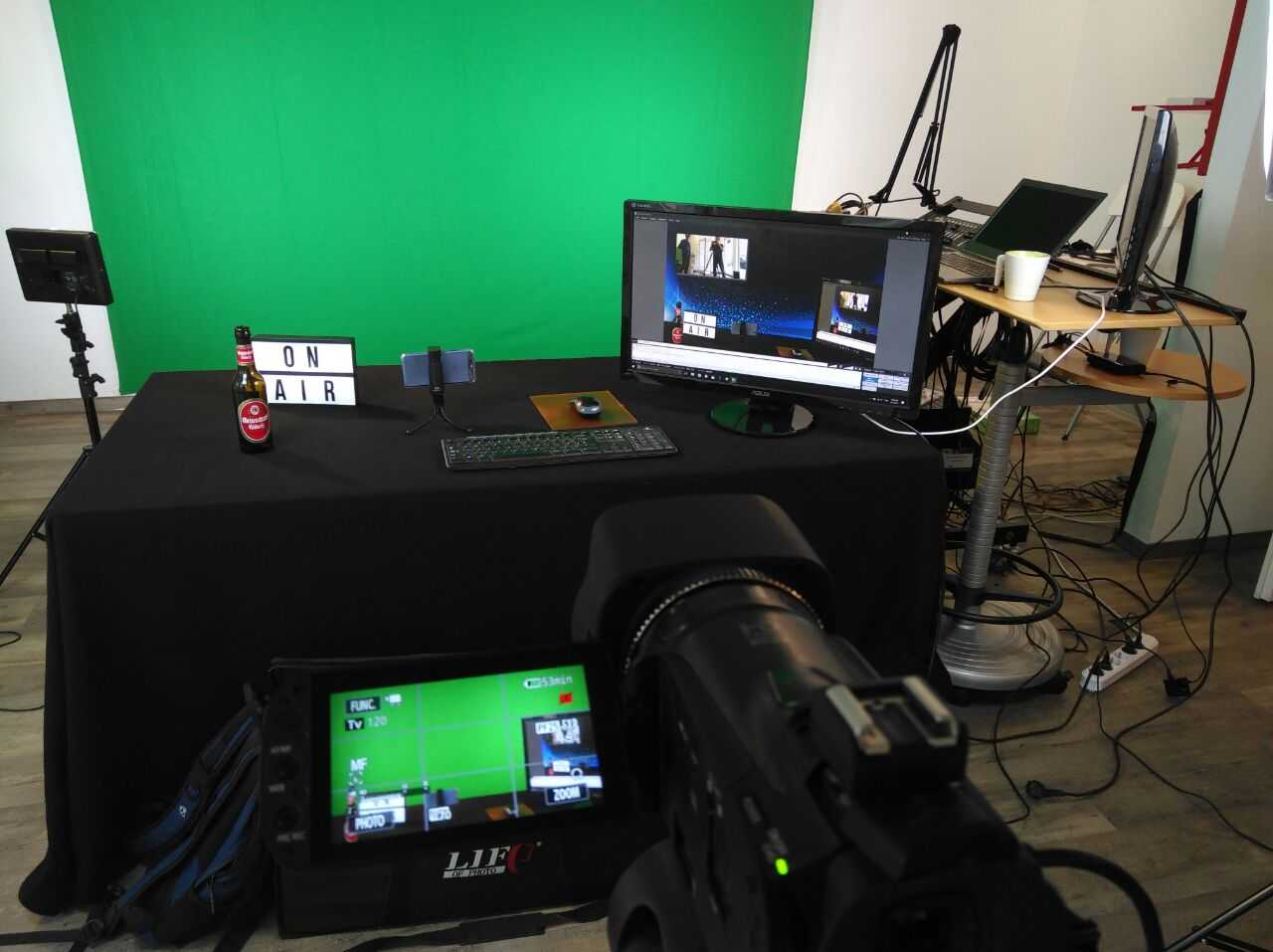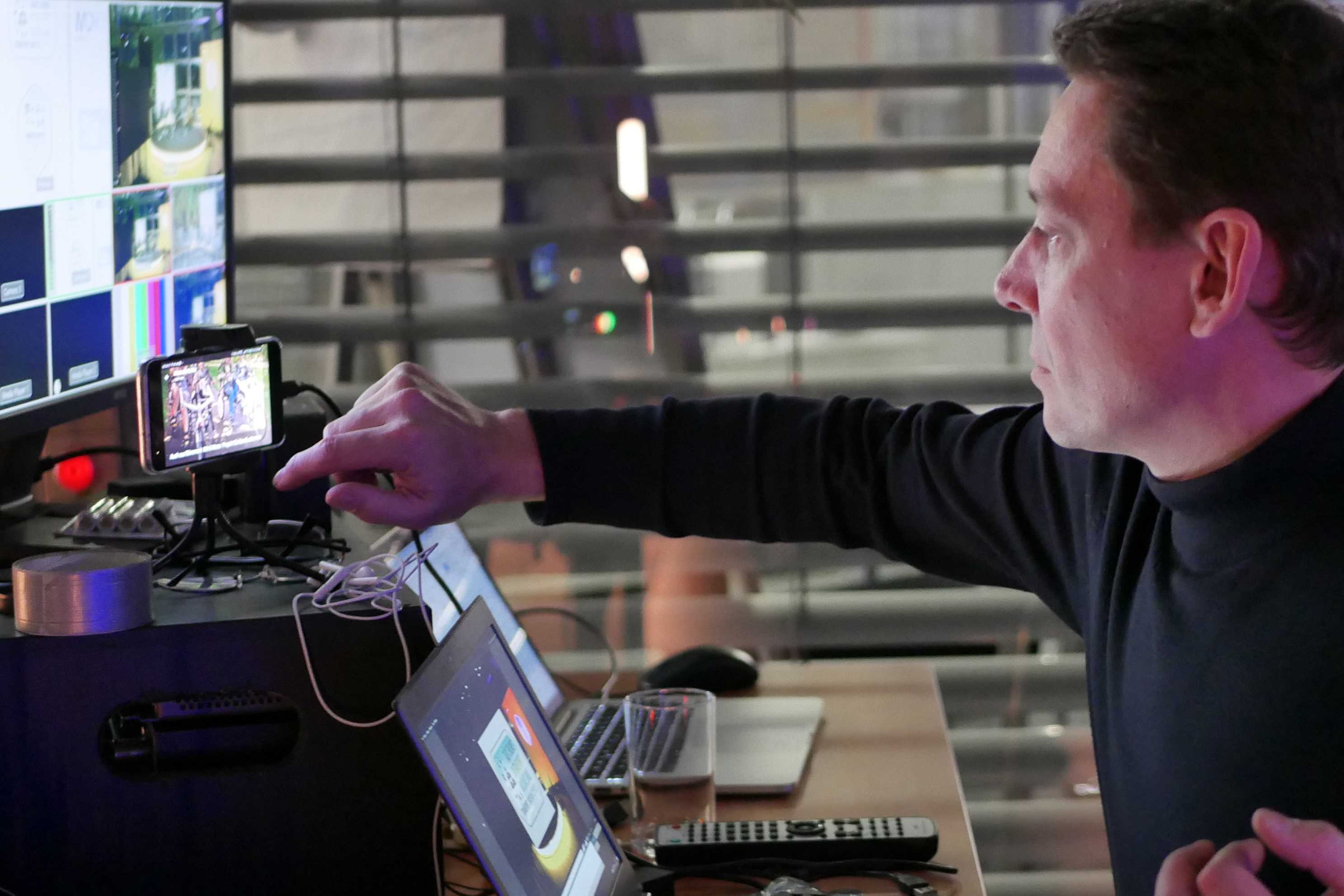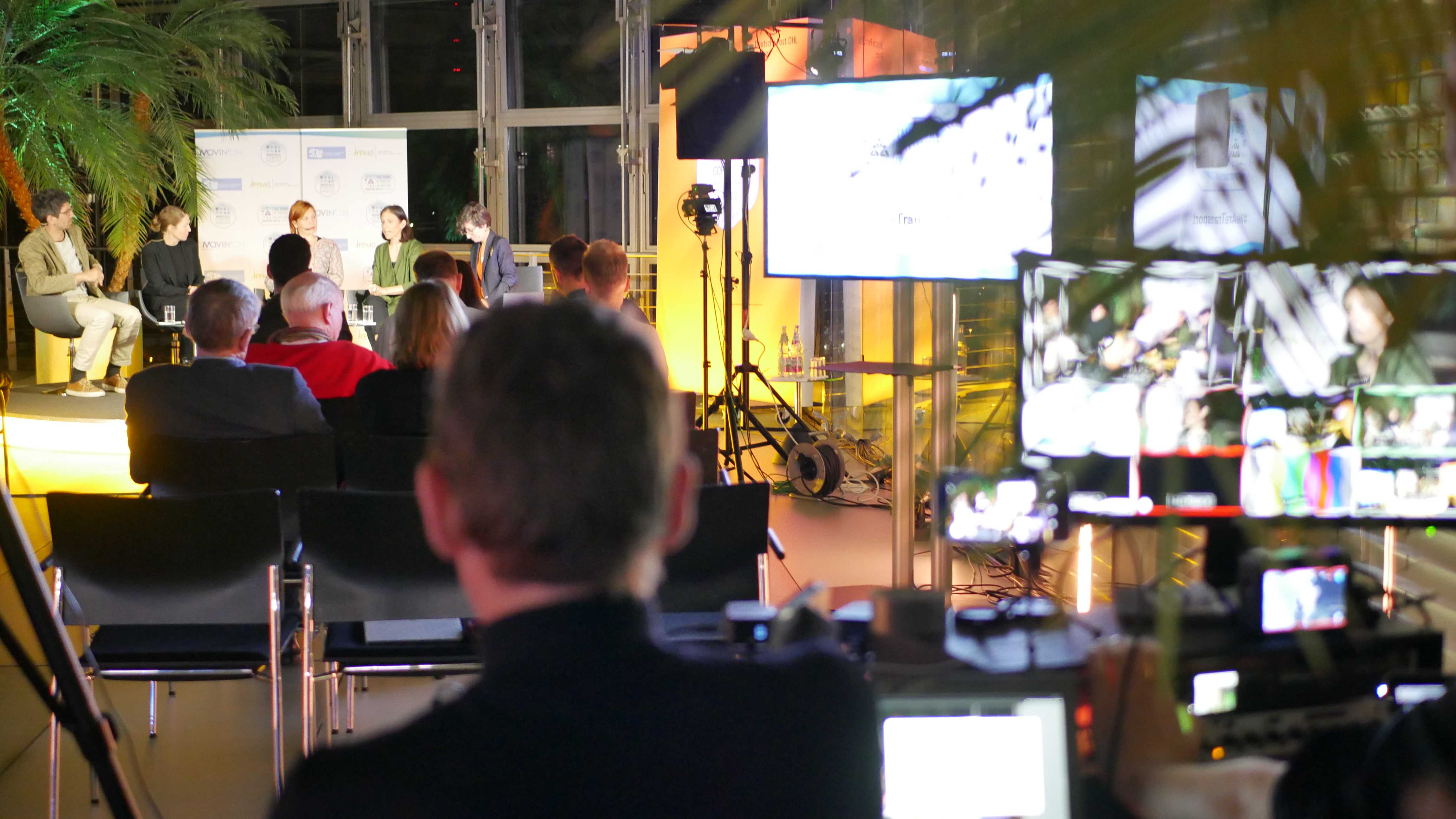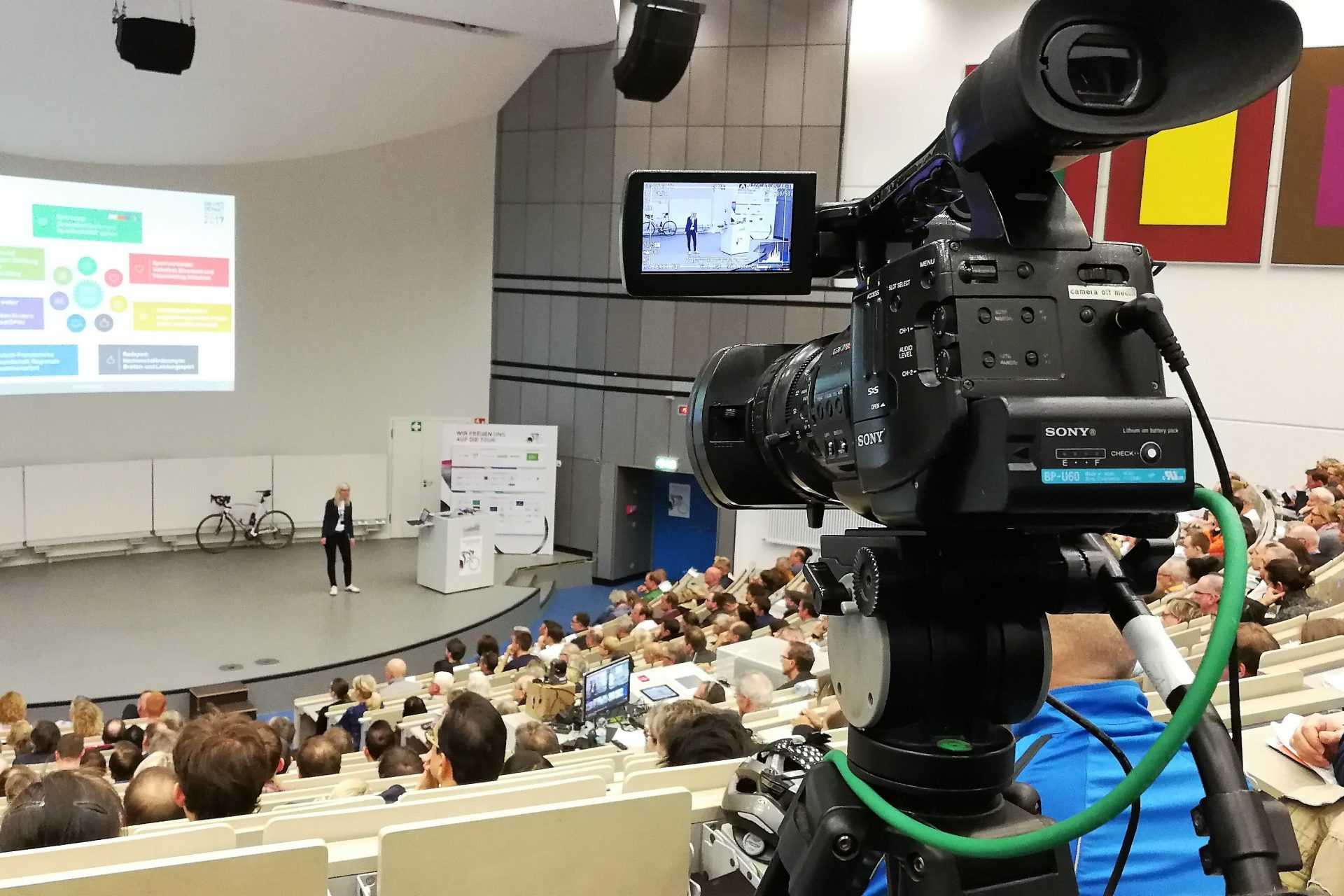A business live stream requires planning, equipment and experienced participants. In our recent post about smartphone-based live streaming we gave you valuable information about the pro’s, cons and costs but in this post we want to outline a typical business live stream setup, the risks involved and give you some of the costs that will allow you to evaluate your needs.
[button link=”http://www.hiblue.com/why-should-i-livestream/” newwindow=”yes”] WHY SHOULD I LIVE STREAM.?[/button]
What is a business live stream?
A business-level live stream is one where quality is raised and risks are reduced to the point where a brand is enhanced.
Live Streaming Risks
The equipment and costs shown below are for a solution with single points of failure. It can be considered ‘business entry level’ and we’ll be honest, finding and setting up the equipment only takes a matter of time and an aptitude for networking, video and software management. Managing the setup, the streaming platforms, production quality and getting the best out of the equipment takes skill and experience. Risk management is critical.
From the microphone to the complex PC that is responsible for capture, mixing, titling and streaming, every component in this system is at risk and when one element fails there’s effectively no possibility to continue. Brand damage can result.
There’s an important note to be made about the streaming platforms too. All of the free streaming platforms are controlled by third parties. Facebook and YouTube provide no up-time guarantees and their software interfaces and system requirements can change without notice. The same applies to the internet-connected networks used to stream and receive the broadcast.
Later in this post you’ll see to reduce some of the risks and plan the costs.
Risk analysis is part of your live streaming project.
A very important point for anyone tasked with organising a corporate live stream: A supplier of livestreaming services has a duty to explain the risks to a customer. If they don’t offer this information, ask. If they can’t supply it, don’t use them. An ability to discuss and analyse risks is an indication of experience.
Failure rate of live streams
Based on HiBlue experience we would suggest a 5% failure rate (audio or video quality issues or complete stream failure) given a well-managed setup with single points of failure using a public streaming platform such as Facebook. For most brands in the market, if the quality of the stream, content and presenters is high enough, a 5% (1 in 20) failure rate is an acceptable trade-off for the relative low cost and potential gains that can be made through social media video platforms. Some streaming platforms have, in our experience, proven to have a higher rate of issues. Facebook is a good example where new features and interface changes cause setup and configuration problems.
Business live stream costs.
In this section, we’re laying everything open for you. We’ll tell you how much equipment costs, how much the staff cost, what additional costs need to be considered and what the risks are. Costs are based on an average, local business live streams.
A typical corporate broadcast includes one or more spoken presentations, a set of slides, a graphical overlay / logo, a video and a small discussion round with up to 4 people. A minimum of two cameras, presentation capture and 5 microphones are needed for a 4 person setup. If an audience is included, a Q&A microphone might also be needed. The duration of the session averages 60 minutes.
Live stream tip: Structure your presentation into 2 parts where the first part is a dynamic summary completed in under 10 minutes. Use the rest of the time to create a deeper presentation where consideration is given to viewer and audience questions. Both parts of the presentation can be used later as standalone videos.
In this equipment list you’ll find details about the equipment setup that we propose for the example project.
There are both PC-based and dedicated video hardware solutions available. Based on many years of experience and research, PC-based video mixing comes with slightly higher risks in terms of stability when compared to a hardware video mixer but adds flexibility and options that far outweigh the risk. For example, adding slides and cameras into a live stream is easy via the NDI protocol, which isn’t supported on entry level hardware video mixers. In addition, entry level video hardware mixers are not able to handle the ‘streaming’ part of the production and can require the addition of a PC.
The target live streaming platforms quality levels chosen are as follows: Facebook 720p 25fps, YouTube 720p 25fps. Local recording (final mix): 1080p 25 fps.
Live streaming hardware costs
- Lighting: Portable LED soft spotlights with tripod stand x2. Portable LED panels x2. Cost: €600
- Cameras: 2 x pro-sumer video cameras with clean HDMI output, long battery life and local SD card recording. Tripods. One with soft panning head. Cost: €1500 Euro inc. cables, batteries and SD cards.
- Main PC: Core i7 quad-core with low-latency 4 port HDMI / SDI capture module. VMix professional video mixing software for subtitles, scene switching, remote low-latency call-in, NDI and streaming capability. Cost: Approx €2200 including a full HD, dual output VMix software license, monitor and keyboard.
- Microphones: 4 x lavalier mics with XLR cabling. One handheld wireless mic of good quality. Cost: €600
- Audio mixer. Mixer, with 5 mic. inputs, compressor and limiter. Headphones and audio cables. Dual audio outputs. USB audio output. Cost: €300
- Other: Gigbait LAN / WAN switch where NDI is used for slide capture. Powerful WiFi adaptor for presentation PC NDI if needed. 2 x LTE modems and data contracts. LAN cables. Backup cables and connectors. Backup single-HDMI USB Capture unit for PC. Backup room / ambient shotgun mic: Mains filtering power distribution. Extension cables. €600
- Risk reduction: Backup laptop and basic USB/HDMI capture card for fallback streaming of one camera. Cost: €600
- Not included: PA system for audio. Background music licensing.
Preparation costs
Project managers (on the customer side) should expect to spend about 1 hour in discussion with the live streaming provider and another hour writing and answering emails between the provider and location technicians. A site visit is required to check facilities and test network and that should be completed by the live streaming company, not the customer. Use this checklist for site assessments which includes aspects like barrier-free access, security, style and the important aspect of comfort and decency for participants. The site visit can result in much better communication between technicians and therefore reduction in risk.
Tip: Live streaming providers with local and location knowledge can be a big advantage.
Live streaming session costs
Session costs for a 1 hour live stream should be based on a 4 hour location occupancy. 2 hours is advised for arrival, setup and testing assuming local network has already been tested. The costs assume a location local to the streaming company, a 1 hour stream and a 1 hour review, break-down and exit period. Allow yourself time for a drink and get-together review after the event.
- Room rental: 45 square meters with power, tables and chairs. Cost: €150 per session (4 hours)
- Network connectivity with dedicated or prioritised and tested upstream bandwidth or dual-balanced LTE modems. Cost €50
- Presentation PC. (Usually supplied by customer.)
- Drinks, snacks, tape, other consumables. Parking: €60 per session. (6-8 people.)
- Producer and operator costs: €600 (4 hours at location)
Optional: ‘Roll-up’ advertising or mobile monitor on stand for logo display. Flowers or props.
Company running costs and profit are not included in the figures above.
Target price for live streaming events
A base price for a single-session live stream production using the example above is 2000 Euro.
Costs reduce dramatically for a series of events. For example an offer of three events for 1000 Euro per 60-minute live stream event at the same location.
Costs rise at about 300 Euro per hour after the first hour and companies should take advantage of this by planning a series of separate video recordings for social media and video archives.
Costs increase costs for difficult locations, where customer requirements need to remain flexible, for weekend and late evening work and on dates when demand is high.
Costs should include project management, site assessment, insurance, equipment management (purchasing, service and equipment testing), transport, staffing, LTE networking and of course, profit.
Backup equipment: Backup equipment example: Two additional cameras and a backup single-camera livestreaming kit. Immediate access to a private streaming server in cases where the popular free social media video services are not suitable or available. (Security and privacy is a consideration.) Co-operation between other creatives and suppliers in the are which allows quick access to backup staff and equipment in case of failure.
Cost-reduction in live streaming
A single-person live streaming solution could use a remote controlled camera. (A PTZ camera.) This reduces the dynamics of the camera work but is possible in certain situations where there are fewer participants.
Reducing risks and improving quality
In this article you’ve learnt about entry-level business live stream costs and project management. You’ve also learnt about some of the risks involved. In order to improve quality, dynamics and to reduce risks there are many many options that can be added that would take the cost of a production to at least 10 times the costs that you see here. Professional equipment in a fail-safe configuration, dedicated audio and lighting engineers, movable cameras, PA systems, audience ticketing, seating and management, lighting packages, full HD streaming, music licenses, make-up, floor management, advertising and staging will all add to costs.








